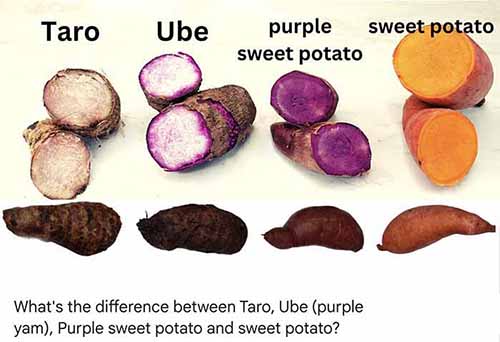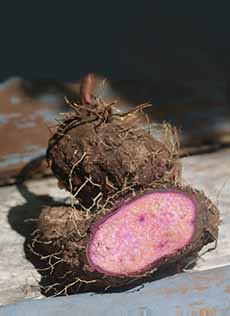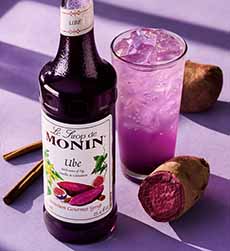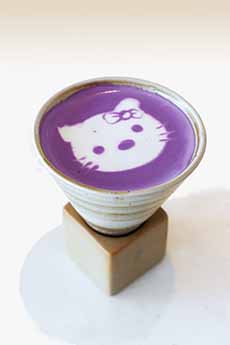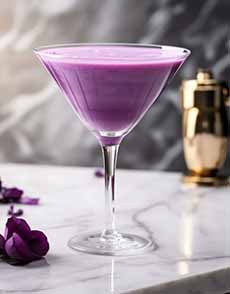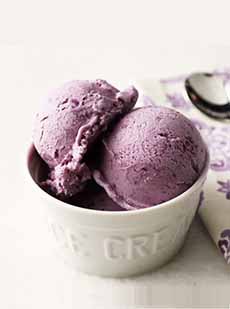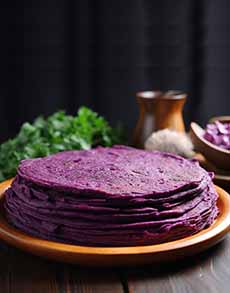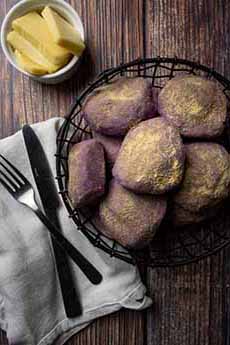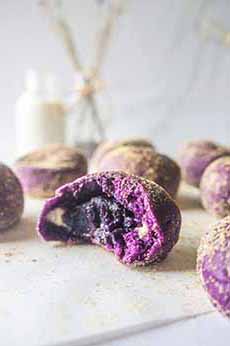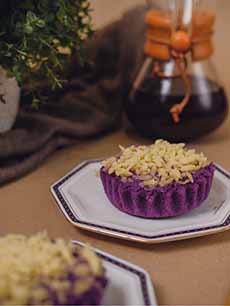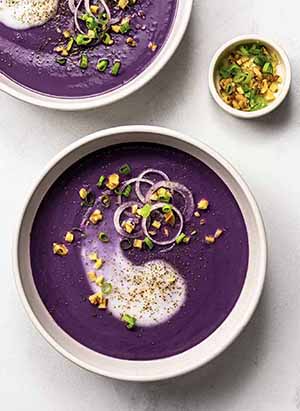The Flavor Of The Year For 2024 Is Ube. What Is Ube?
|
Experts at one of the world’s top food and beverage flavor companies have officially identified the official 2024 Flavor of the Year. It’s Ube (OO-beh). The “Flavor of the Year” was recently introduced in the 2024 Food and Beverage Flavor Trends Report, an annual publication by California-based T. Hasegawa USA, one of the world’s top 10 flavor manufacturers, based in California. Each year, T. Hasegawa leverages its industry expertise, working with many of the world’s top food and beverage brands, to compile this trend report highlighting up-and-coming ingredients, culinary techniques and more. The report notes that over the next four years: Ube (photo #1), also known as purple yam (that’s not the same as purple sweet potato) is a starchy tuberous root that’s native to Southeast Asia and predominantly used in Filipino cuisine. It has been a cultural staple in Filipino cuisine for more than 400 years. The first printed reference is in Tagalog and Spanish dictionary published in 1613, although it no doubt [source]. The word means “yam” or “tuber” in Tagalog, a native language in the Philippines. From a health and nutrition standpoint, ube is high in the photochemical anthocyanin, a strong antioxidant, which engenders its purple hue. It’s also a good source of fiber and vitamin C. In terms of history, appears to have originated in Bohol, an island province in the Philippines, specifically in the areas of Panglao Island and Guindulman. It’s noted for its vibrant violet and lavender hues, ube has a distinctive nutty and sweet flavor profile, with hints of vanilla. The color as well as the creamy sweetness make it popular for in desserts in Filipino cuisine; and in the era of social media, the color makes it popular for posts! It’s also used in savory and recipes. ube is even sweeter than its distant relative, the purple sweet potato (photo #9). It’s ubiquitous in sweets, from cakes to ice creams, other baked goods and desserts, candies and drinks. And we can’t say it often enough: Ube, the purple yam, is not the same as the purple sweet potato (see the side-by-side comparison in photo #9). Ube (purple yam) and purple sweet potatoes are members of different botanical families, which makes them very distant cousins. They have different skin types, and different flesh. It can be easy to confuse ube purple yams and purple Okinawan sweet potatoes, and there is so much misinformation online. Often, ube is referred to as a purple sweet potato. But make no mistake, they are two different tubers. Remember high school biology? The plant kingdom breaks down into kingdom, phylum, class, order, family, genus, and species (plus subspecies, when applicable). The flavor is similar, but ube is a bit creamier because it has more moisture. It’s also sweeter. Taro is a starchy tuber like ube, and is often confused with ube. Both can be used in sweet and savory recipes. [9] Many thanks to Juanjuan Taste, whose YouTube video (link above0 is the best explanation of these different roots that you can find. In beverages: With its brilliant purple color, creative chefs, baristas, and mixologists are using frozen ube, ube extract or powder (from dried ube) to make trendy, photogenic cocktails, bubble tea, lattes, and other drinks (photos #2, #3, and #4. Just search for #ube on Instagram! In sweets: In the Philippines, ube is usually boiled, mashed, and used to make desserts. There are ube candies and puddings like ube halaya, a classic Filipino dessert. And the most delicious, perhaps: ube ice cream. It has found its way to the U.S. at specialty stores (and even Trader Joe’s). In addition to extract, frozen, and powdered ube, there is also ube jam, called ube halaya (you can find it at Asian grocers and online). You can make just about any food to which Unfortunately, it’s not yet easy to find fresh ube in the U.S. We tried to track some down as of this writing, and couldn’t. In the Philippines, there are two harvest seasons for ube, in June and December. It has just begun to be grown in Florida, where the warm and humid climate is just right [source]. And if you purchase ube in another form (extract, frozen, powder), be certain it is purple yam and not purple sweet potato. But since ube is our Top Pick Of The Week, do try it at your earliest convenience, either by purchasing something made with real ube, or making something yourself. There are recipes galore online for anything you could desire, from appetizers through to desserts and snacks. > Find more of our Top Picks Of The Week. > There’s a food holiday for every day of the year. Check them out! > October is Filipino American History Month, a month-long commemoration and appreciation for the Filipino experience throughout American history (which stretches as far back as 1587). > Philippine National Day, the independence day of the Philippines, is June 12th. |
|
|
|
CHECK OUT WHAT’S HAPPENING ON OUR HOME PAGE, THENIBBLE.COM.
|
||
